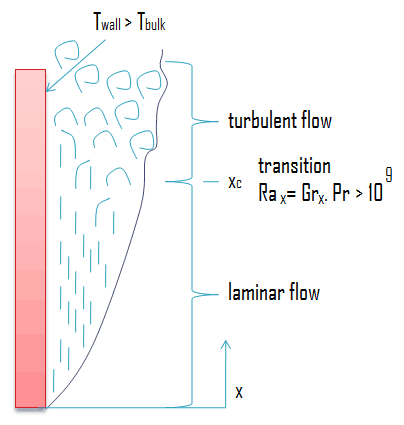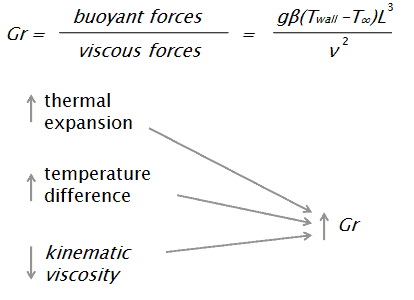What is Grashof Number
The Grashof number is a dimensionless number, named after Franz Grashof. The Grashof number is defined as the ratio of the buoyant to viscous force acting on a fluid in the velocity boundary layer. Its role in natural convection is much the same as that of the Reynolds number in forced convection.
Natural convection is used if this motion and mixing is caused by density variations resulting from temperature differences within the fluid. Usually the density decreases due to an increase in temperature and causes the fluid to rise. This motion is caused by the buoyant force. The major force that resists the motion is the viscous force. The Grashof number is a way to quantify the opposing forces.
The Grashof number is defined as:
where:
g is acceleration due to Earth’s gravity
β is the coefficient of thermal expansion
Twall is the wall temperature
T∞ is the bulk temperature
L is the vertical length
ν is the kinematic viscosity.
For gases β = 1/T where the temperature is in K. For liquids β can be calculated if variation of density with temperature at constant pressure is known. For a vertical flat plate, the flow turns turbulent for value of Gr.Pr > 109. As in forced convection the microspic nature of flow and convection correlations are distinctly different in the laminar and turbulent regions.
The Grashof number is closely related to Rayleigh number, which is defined as the product of the Grashof number, which describes the relationship between buoyancy and viscosity within a fluid, and the Prandtl number, which describes the relationship between momentum diffusivity and thermal diffusivity.
Example: Grashof Number

Solution:
The property values required for this example are:
ν = 1.48 x 10-5 m2/s
ρ = 1.17 kg/m3
Pr = 0.700
β = 1/ (273 + 20) = 1/293
We know the natural circulation becomes turbulent at Gr.Pr > 109, which is fulfilled at the following height:
We hope, this article, Grashof Number, helps you. If so, give us a like in the sidebar. Main purpose of this website is to help the public to learn some interesting and important information about thermal engineering.

